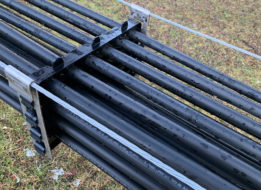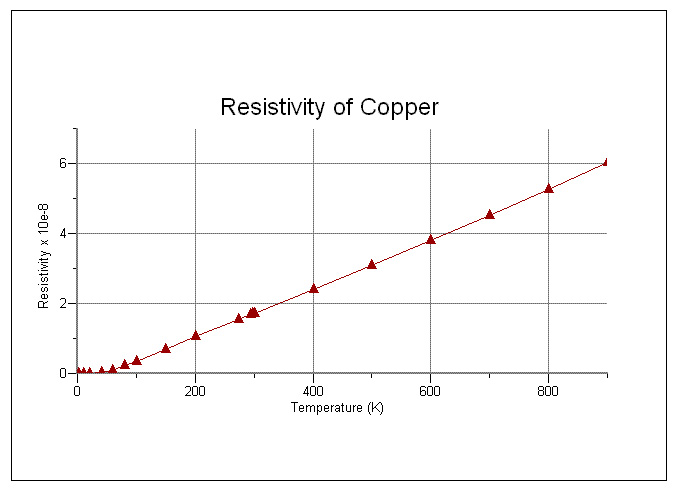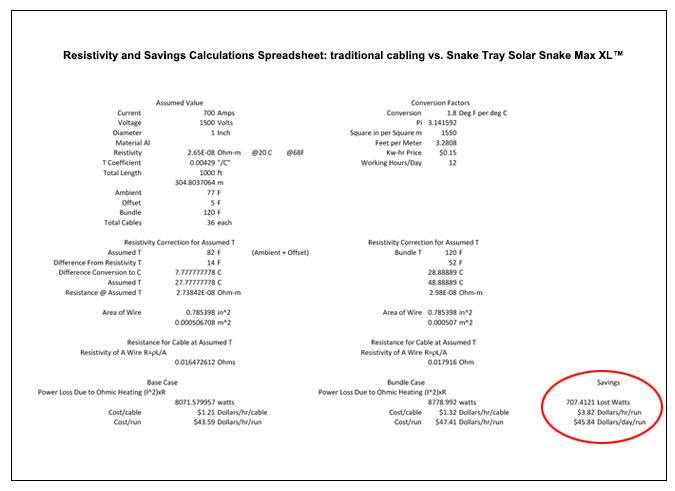We’ve been telling solar operators how the Snake Tray Solar Snake Max XL™ system saves money on materials and labor while increasing daily energy harvest by up to 30-watt hours per meter over traditional trenching and bundling cable methods, and now we have the numbers to back it up.
First, there are material savings. The patented Solar Snake Max XL™ is an above ground (aka “free air”) cable management system that uses the same piles driven into the earth to support the solar panel arrays. Attached via two tensioned messenger wire cables with separators inside the tray conveyance that meets NEC Article 310.15 requirements for uniform separation of up to 36 cables over the entire length of a run. The separation prevents the collision of the electrons that create the heat that robs the developers return on investment maintaining the maximum possible energy throughput for a given cross section of conductor. Consider the savings a solar plant can achieve by using 500 Kcmil cables in free air space to convey the same power of 750 Kcmil buried cables. Solar plants can save up to 30% on cable costs alone!
system that uses the same piles driven into the earth to support the solar panel arrays. Attached via two tensioned messenger wire cables with separators inside the tray conveyance that meets NEC Article 310.15 requirements for uniform separation of up to 36 cables over the entire length of a run. The separation prevents the collision of the electrons that create the heat that robs the developers return on investment maintaining the maximum possible energy throughput for a given cross section of conductor. Consider the savings a solar plant can achieve by using 500 Kcmil cables in free air space to convey the same power of 750 Kcmil buried cables. Solar plants can save up to 30% on cable costs alone!
Next, there are labor savings. Burying hundreds of rows of high ampacity cables is labor intensive, disruptive, time-consuming, and expensive. Laying cable directly in the ground involves trenching, overcoming challenges and delays caused by weather, mud, rocks, and other underground obstacles, and waiting for the ground to settle. Cable repair is expensive and hindered by lack of visibility to an exact failure point. Solar Snake Max XL™ requires less time and labor to install, reducing labor expenses by as much as 45%. Snake Tray can cite several instances where installers were hanging up to 21,000 feet of cable per day using Solar Snake Max XL™ as opposed to laying 3,000 feet of cable per day into trenches, equal to a 7:1 productivity ratio. Post-installation, Solar Snake Max XL™ lowers future operations and maintenance (O&M) expenses through easy visual inspection to pinpoint failures for faster repairs.
much as 45%. Snake Tray can cite several instances where installers were hanging up to 21,000 feet of cable per day using Solar Snake Max XL™ as opposed to laying 3,000 feet of cable per day into trenches, equal to a 7:1 productivity ratio. Post-installation, Solar Snake Max XL™ lowers future operations and maintenance (O&M) expenses through easy visual inspection to pinpoint failures for faster repairs.
Further, the Solar Snake Max XL™ separator system is made of a sophisticated polycarbonate with a high dielectric strength. This produces an additional barrier of insulation and creates an uninterrupted reality that makes megohm testing unnecessary, as cables never touch each other or the ground plain.
Most importantly, there are quantitative performance savings. The Solar Snake Max XL™ platform has been mathematically proven by Physicist’s to harvest more energy daily for the entire life of the system, capturing thousands of watt hours of clean power every day that would otherwise be lost to the effects of resistance. That means solar plants owners will make more money every day – in addition to the aforementioned material and labor savings – adding hundreds of thousands or millions of dollars to the balance sheet every year depending upon the size of the installation. And we’ll prove it.
The Snake Tray Resistivity and Savings Calculations Spreadsheet uses calculated physics and precise coefficient values for the resistivity of aluminum at different temperatures to determine the amount of power lost to Ohmic heating. Researched and designed by a team of Physicist’s, this tool compares equal amperage, lengths, and quantities of bundled or buried cables versus those held in free air conveyance at the average ambient temperature for the solar plant location. Using that delta, it then converts anticipated power loss into a dollars and cents comparison given the cost of a kilowatt hour in the local market. From there, it’s easy to extrapolate hard numbers showing the ongoing quantitative savings of Solar Snake Max XL™ rooted in the laws of physics.

This example illustrates the savings of a bundle of 36 cables, each 1,000 feet long and rated for 700 Amps, at an average ambient temperature of 77°F. When buried, the cables will yield 8,072 watts per hour. Using the Solar Snake Max XL™ system, the same solar array generates 8,779 watts per hour, harvesting an additional 707 watts per hour by not suffering from resistance. Using an average Kilowatt price per hour of $0.15, each bundle of 36 cables can generate an additional $3.82/hour, or $45.84/day per run (assuming a 12-hour day). If the average utility-grade solar plant has 125 runs, that equates to $5,730 of daily incremental revenue, or over $2 million dollars per year—every year!

If you would like hard proof of exactly how much incremental power and revenue the Solar Snake Max XL™ can generate for your next solar plant, reach out to Snake Tray. We’ll help you crunch the numbers given the variables of your environment, market price for power, and the size of your installation to deliver the highest level of quantitative savings to maximize your return on investment. With Snake Tray Solar Snake Max XL™, you can’t lose! You’ll save money on materials, you’ll spend less on labor, and you’ll harvest more energy, increasing revenues. Stop leaving electrons on the table. Call Snake Tray today!
Is your project Snake Tray ready?
Snake Tray has revolutionized the industry with cable management, power distribution systems and enclosures all designed to install quickly, reduce labor and material costs, and significantly drive down the total cost of construction. If you would like to learn more, visit us at snaketray.com. Our engineers and sales teams stand ready to help execute your next cabling project with maximum efficiency and profitability.

